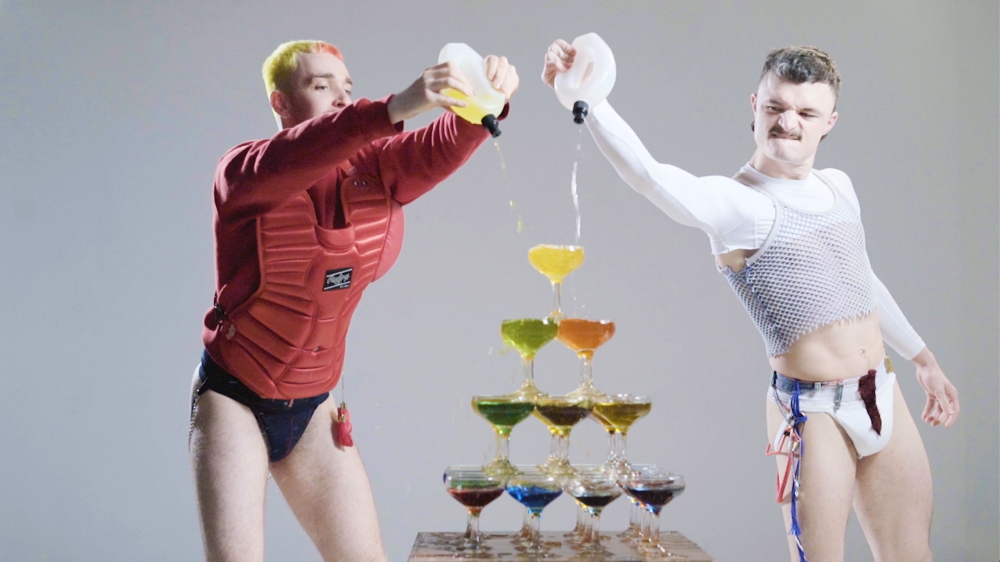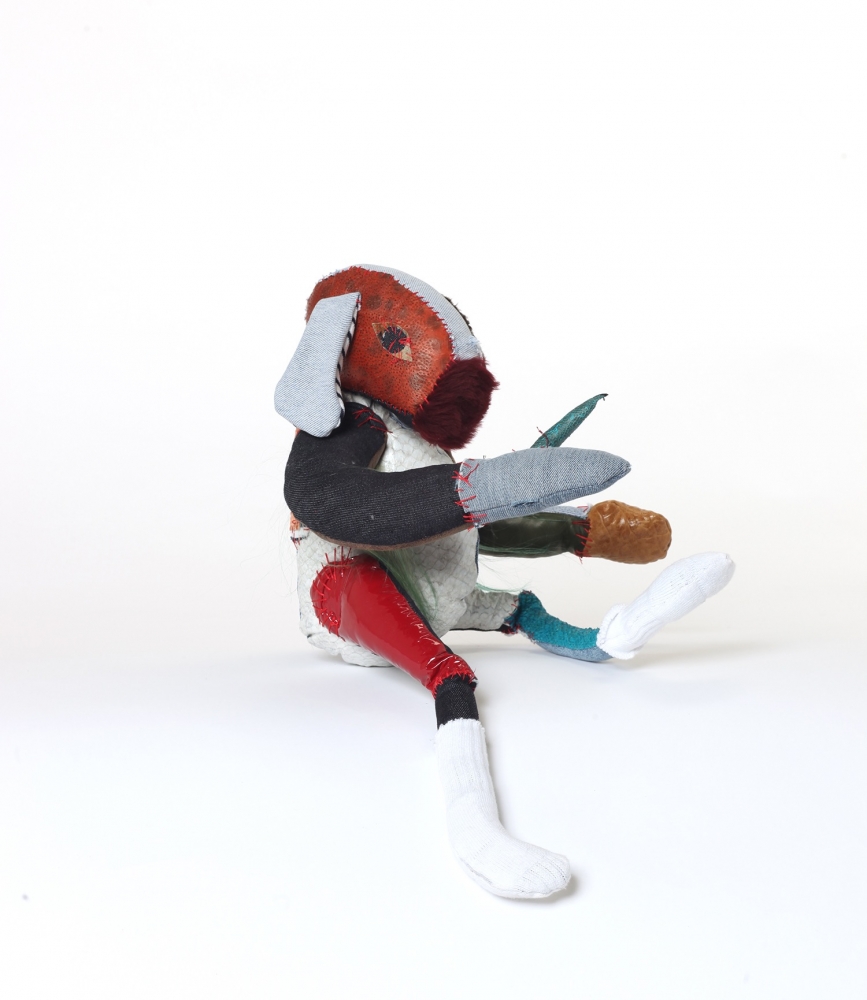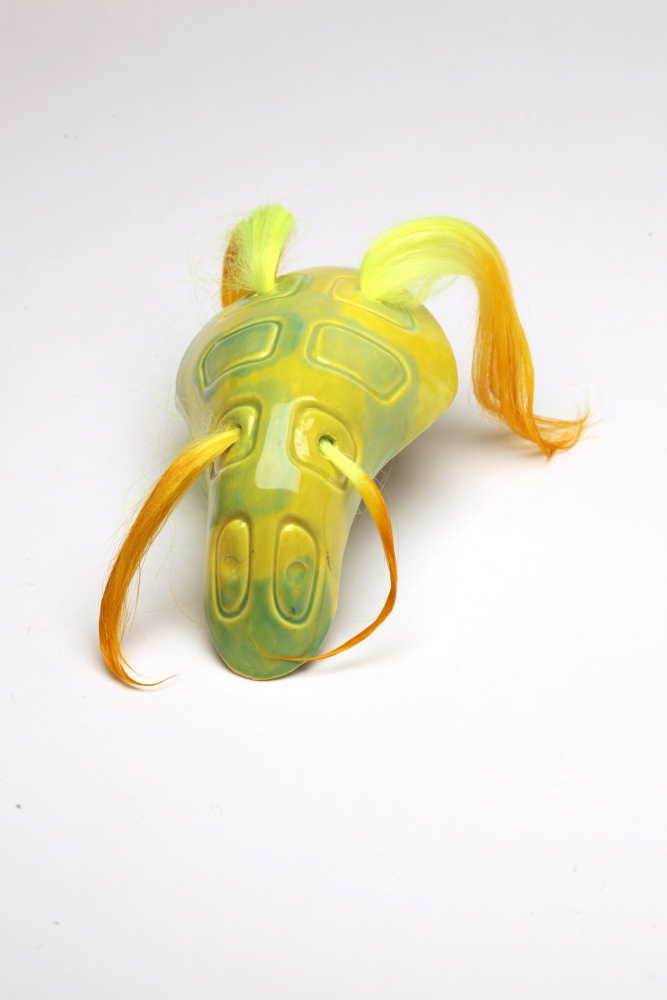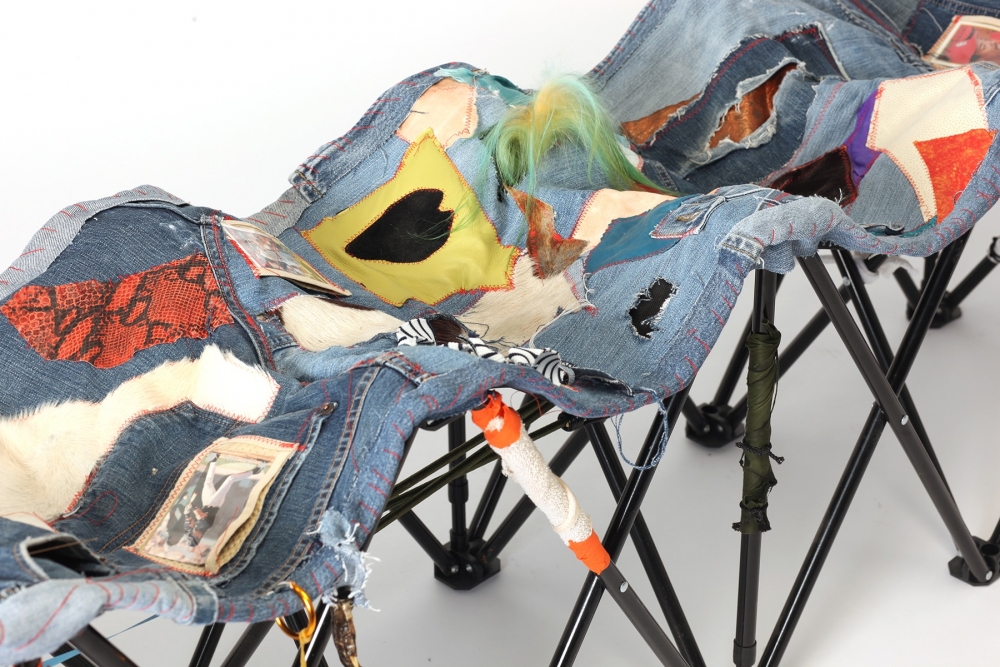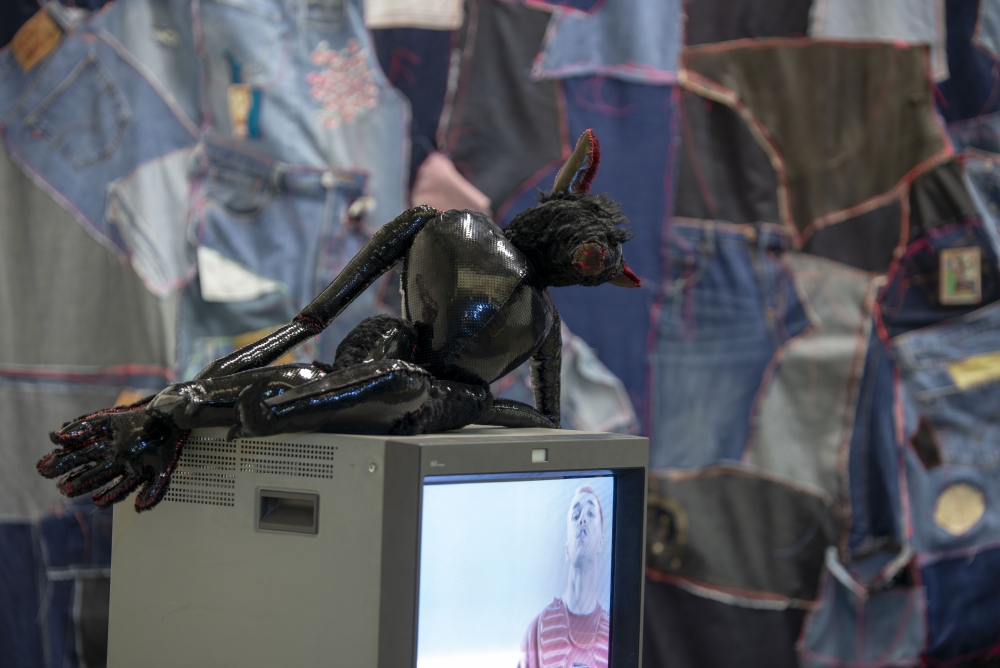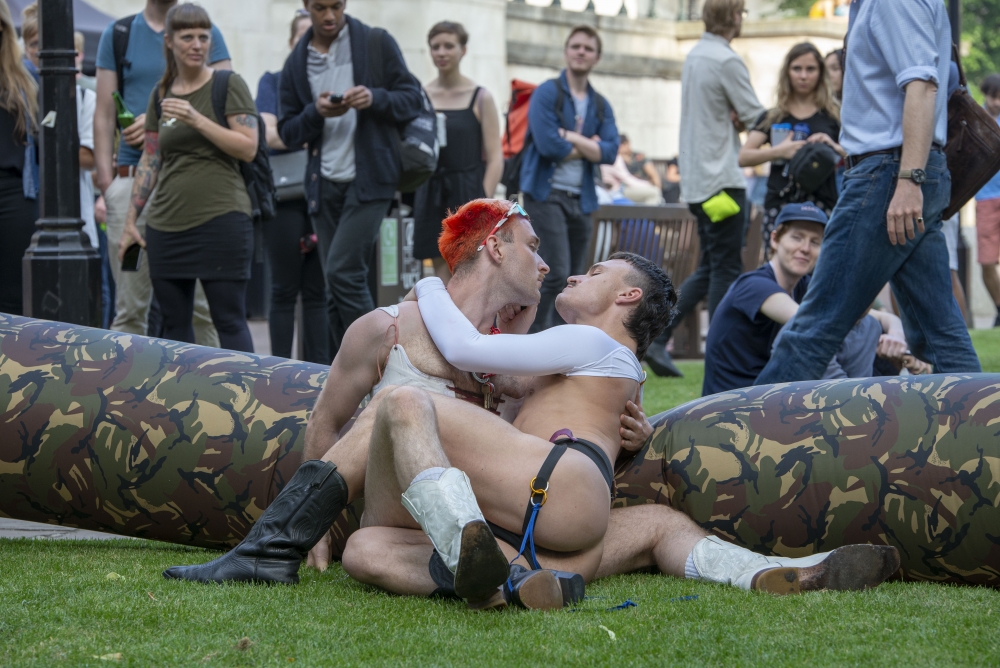Something different happens when one interviews someone they know well – a kind of shorthand, in which past conversations overlap and rub up against the current one, ostensibly about this work in front of us right now, the newest visible expression of a practice. Gray and I have enacted these conversations in backyards, parks, gardens, greens and heaths across London – both joyous and uneasy, both of us formed in warmer climates, seeking the light when it happens. First, like with many people now, we talk about the visa situations of everyone we know in London, and the labyrinthine movements of everybody through the paperwork of this world.
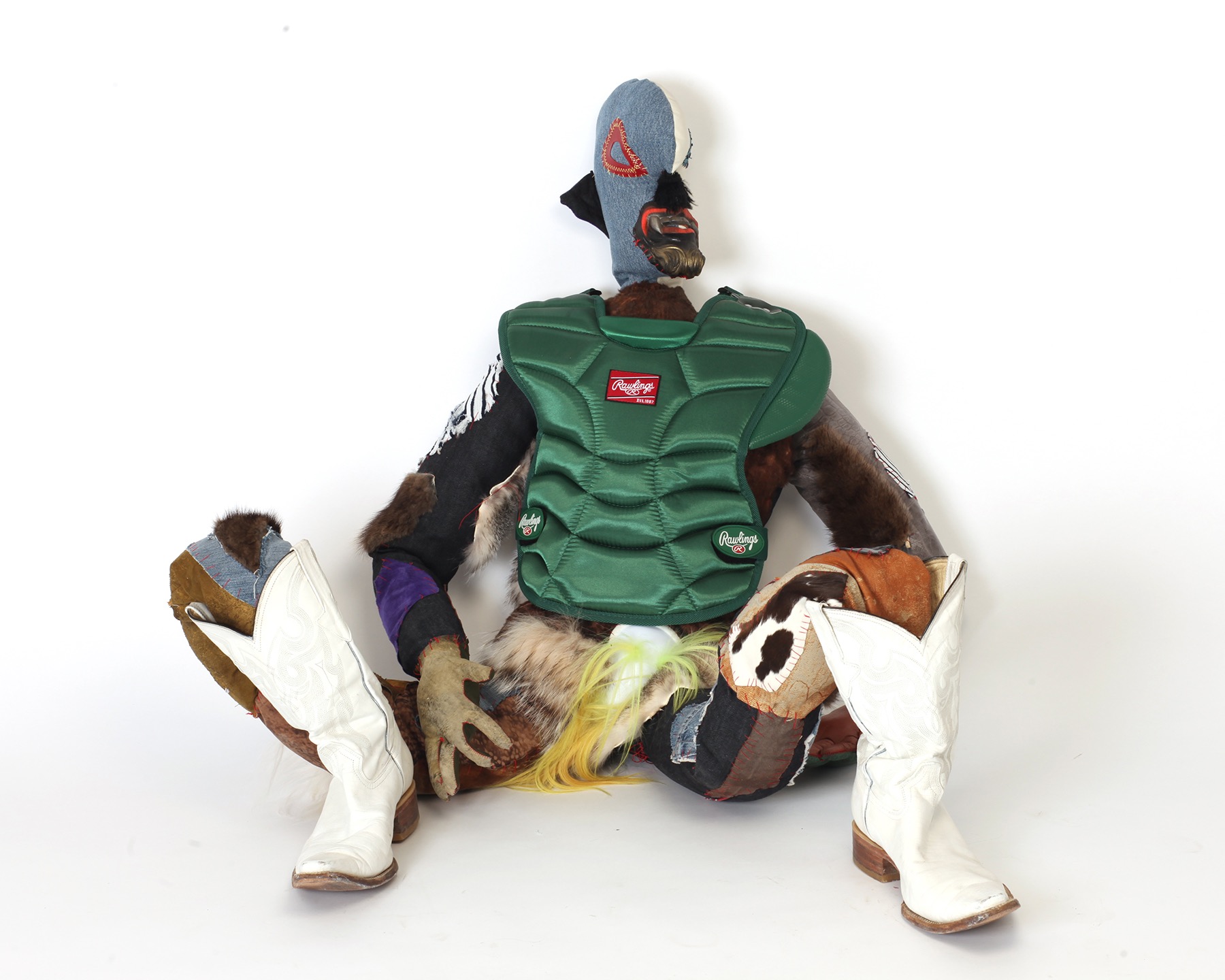
Gray Wielebinski is an artist from Texas via Los Angeles, who has recently completed an MFA at London’s Slade School of Fine Art. Their final show, which ran June 7 to June 18, gave the effect of a louche, queer locker room, the kind that belongs to fantasies where beautiful, half-naked boys paint help each other armour up and a tower of champagne coupes spills over with technicolour sports drinks. Baseball bats and cock cups have been reframed in transparent resin or delicate porcelain, and trading cards re-stitched together to form hybrid creatures, like the forms the stuffed toys guarding the space take, long-limbed and vulnerable.
Piling Americana onto itself, one wall is clad entirely in blue denim, and spectator’s chairs have been kitted out in a communal orgy of fake fur and snakeskin. In the film Rookie, a boy tauntingly flirts with the camera, teasing the artist by shredding, one by one, their childhood collection of baseball cards, before rolling around luxuriantly in the wreckage. After marinating in the various sexualities and political ideologies, both joyous and uneasy, the only appropriate topic left is to talk about making art that turns you on.
aqnb** Was this the first time you’d worked with other people? I know that you have used actors before, but you’ve also used yourself as the physical body in past works…
Gray Wielebinski: I’ve worked collaboratively before, but this is one of my first forays into ‘proper’ collaboration. This is the first time I’ve used actors, and specifically dancers, in a work. The video ‘Rookie’ was made last year, and these two are this year, with the same dancers.
aqnb** What’s the show called?
GW: A Dog Pees on things for more than one reason
aqnb** (laughs) Maybe we can talk about piss, then. What are your thoughts on piss?
GW: The show started out as being a meta-conversation between sports, which has this infrastructure and iconography, and art. In the art world there can be a dismissal of the link between the two, as if they’re totally opposite realms. But from personal experience, and sociologically, they actually operate in quite a similar way. So this is Chester shredding my childhood collection of baseball cards, and he’s supposed to be taunting me with his masculinity, with this desire for what he has, while I’m also being repulsed by him. But the subtext is that I’m the one in power, as the artist making him do these things. And of course, the process becomes a piece of art, which has a different worth and capital value.
But it became a really interesting power dynamic between the two of us, like a kind of ventriloquism. So in a way this video is totally emasculating for me, but arguably by making the work I’m emasculating him, so we’re making these circular relationships. In that way, pissing is like the whole show! On the one hand, pissing all over something is being a metaphor for masculinity and what we think about it in terms of that, and also marking your territory while mucking everything up. But at the same time, I as an artist want to piss all over everything and thereby make it mine, using collage and reappropriating things. I think that’s kind of a theme that runs through everything I do. I’m a hoarder, a collector, and if I love something I want to piss all over it and make my mark.
aqnb** But pissing all over something is also to reject it, no? Like ‘I had this great idea, and you pissed all over it’.

GW: That’s true too, and I think that the title alludes to, with some of the creatures especially, a kind of anthropocentric thinking. Because through much of this, I’m thinking about creatures and trans bodies and “monstrous” creatures that I’m really interested in making. But still that idea, that with dogs peeing on things, is that — there are reasons, scientifically we know that they’re marking their territory, or they’re anxious, or excited, or — those are arguably things that we as humans have identified, and project onto them.
aqnb** We can only imagine animals within the human range of emotions, having the same range.
GW: Yeah, and we don’t really know! So there’s this futility, or this desire to understand, co-opt, and make sense of things that are beyond our understanding. So I’m thinking of these monster figures, for me in my own way, like a way of moving through gender identity, while at the same time proposing that it can go beyond that in a way that is hopefully more fucking complicated!
aqnb** Is it important that people know that trans content for the work? Do you think it is directly embedded in the objects, or is it more a mode of thinking through…? Obviously this is an impossible question, but i guess — how do you imagine a stranger reading these works that are about hyper-masculinity and US culture. For example, even though I knew your work, I didn’t necessarily read the stuffed animals directly through that lens, but as more of a freak-vulnerability, a childhood moment…
GW: Definitely, and it’s one of the reasons I moved in this direction. I was thinking about collecting being like a loneliness or an anxiety of childhood, about ideas of transference and isolation, and also, I’ve definitely developed in how I feel about this in an art context but, personally, it’s quite lonely making work that becomes pigeonholed and people see it only in one way. It’s lonely because then people don’t want to connect with my point that everyone can get something from.
aqnb** It can become cut off from a wider dialogue, which was exactly the opposite intention. You don’t want people coming with the intention of only seeing it through a very narrow lens. It becomes hyper-contextualised.
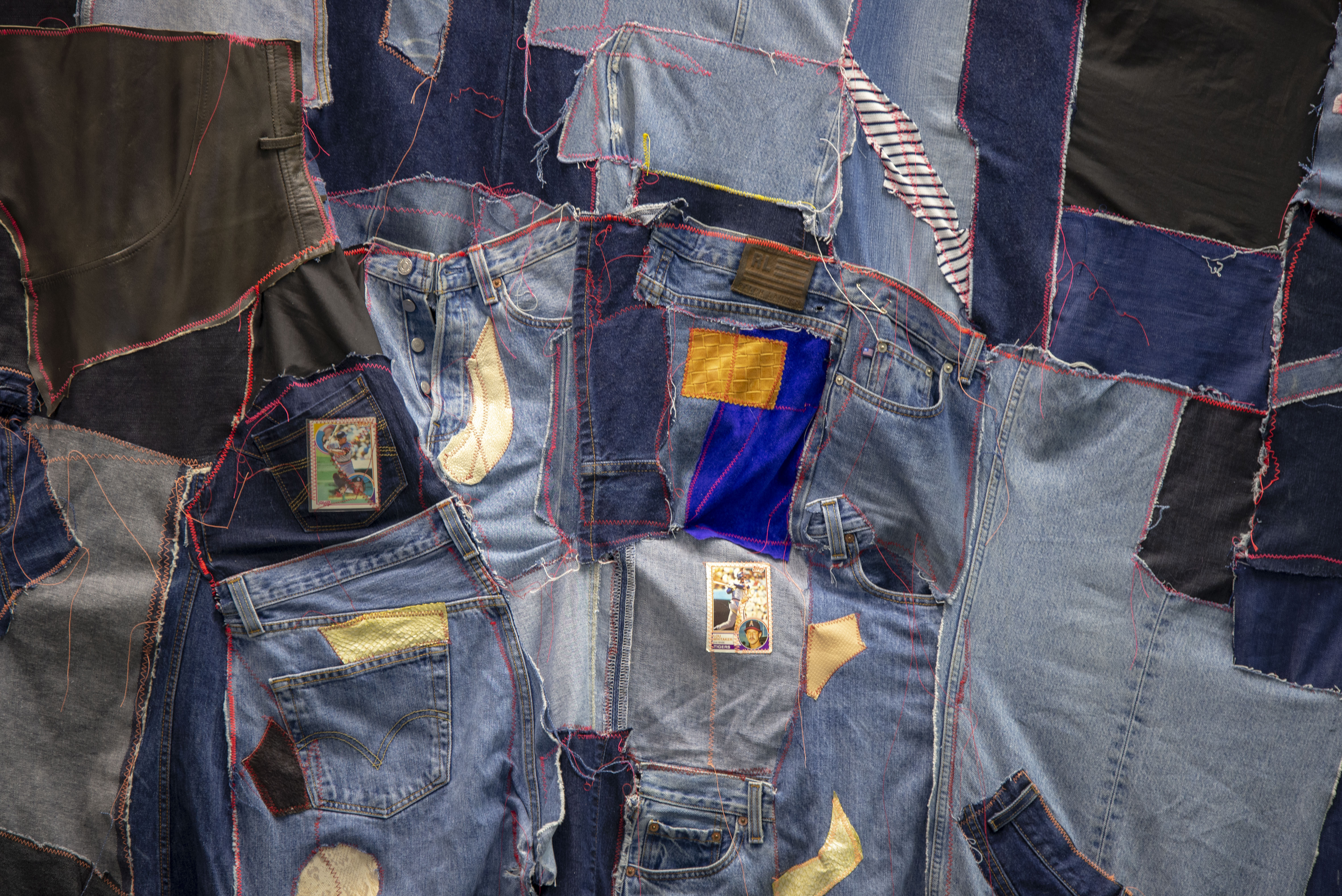
GW: Exactly, and that’s why it feels lonely. So I think it absolutely doesn’t need that biographical background. Because I’ve had a lot of disconnect, because my name doesn’t necessarily reveal a gender. And when they see this, a lot of people think I’m a gay white dude. Which… actually!
aqnb** (laughs)
GW: Maybe I underestimated people’s capacity to complicate the narrative. I was wondering, with the creatures themselves, they’re quite ambiguous, and with having an actual body in the room it changed the reading somewhat. That’s one of the reasons I like working with dancers.
At first I did have a script that I wanted him to perform for this video — I wanted to make sure that it felt like a collaboration, and that I wasn’t making him do anything he wasn’t uncomfortable with, but in the end he was just so capable of embodying what I wanted to say, more so than needing to use words. I think that he embodied it being so many things at once, which is what I wanted. So you said is it important, it is important, but it’s not what the whole show’s about either.
aqnb** I was thinking back to what you said about this idea of the childhood object, and how that can become a fetish object continuing into adulthood. The location of an obsessive image that is clung onto, and how with something like baseball cards, usually that kind of collection happens in a transitional phase, maybe continuing from childhood to puberty or whenever — the point being that there may be a point at which the collection is abandoned.
So the collection is standing in for something — a finality, the desire for the last piece of the puzzle. A collection is most satisfying when it’s finite but almost impossible to complete — it isn’t the same effect to collect rocks, unless they were a special kind of rock! Things that can be finished don’t have the same charge as something that can almost infinitely be added to, searched for. There’s a point where, as a teenager, you see adulthood as the ‘end’ of your life, as a point of completion. Which obviously is a horizon that keeps shifting away.
GW: I totally think that’s true, and I think the fetish object is completely something that’s imbued with other meaning. There’s other layers of value – with the baseball cards there’s worth that I put onto them as personal objects, before as collectors’ objects, and now as art objects.
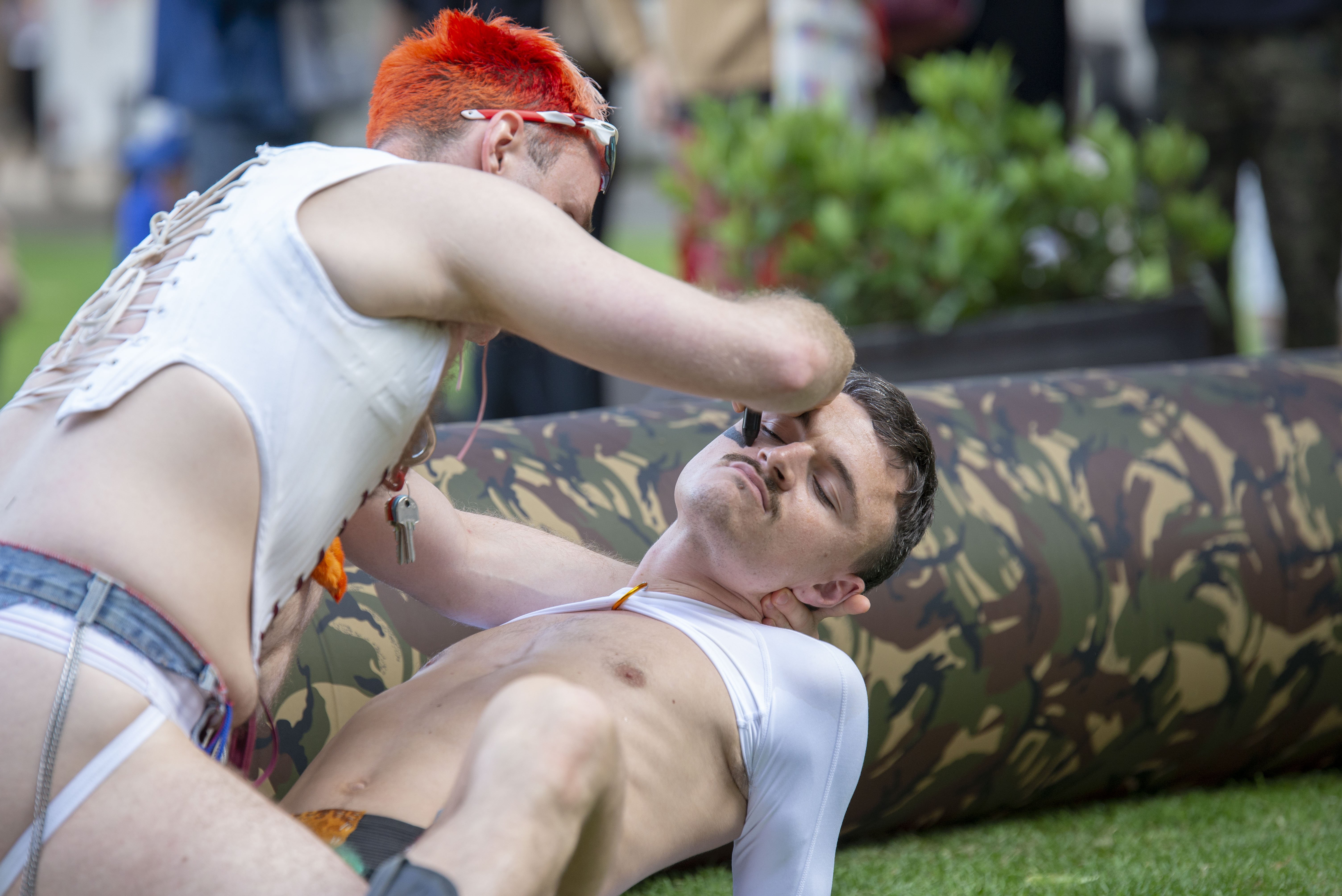
aqnb** We’ve had a conversation before I think, about personalised content, and fetish videos for example, being this really niche and densely emotional form of content — the addition of the personal obsession into, for example, pornography. Something so particular to one person’s formation that they would pay to have it played out exactly to their description by a professional.
GW: Yeah, and the future of media in general, how it will probably become more personalised. Being on a loop, also, makes it function like a kind of speculative fiction — like if you watch Blade Runner and they have these huge ads that are playing and are beckoning specifically to you. Maybe we wouldn’t have foreseen that they will be so specific, so tailored to your accumulated data and emotional history…
aqnb** Yeah, talking directly to you, like this is a thing that you treasure! When I saw that scene where he’s rolling around sensually in the shredded remains of your collection, I thought of the scene in the film IKU by Shu Lea Cheang, when they’re having sex in piles of discarded electronics, obsolete technologies and media. He’s in the shavings and rolling around and taunting you, in the context of a physical media that has been destroyed or forgotten and is being transformed into something else.
GW: This work was a foray into using a stand-in, but in the double meaning of that word. Because of a number of reasons, but also dysphoria I suppose, I don’t like being on camera. So basically I think of this as being autobiographical or self-portraiture, while at the same time what does that mean to not physically be visible? Even with “Maybe The Past and the Future is All the Present Is” the voice was dysphoric and also disembodied. So that was the first foray into it, and this is moving into the idea of a placeholder.
aqnb** (Pointing at ‘Centipede Chair’) So these are spectator chairs, right? These are a kind of chair that is basically only used for watching something. For watching amateur sports, weekend sports. This is like the human centipede version of that!
GW: There’s something I find really interesting about sports, I’m talking about masculinity but also in general — you’re allowed a closeness that then becomes taboo or weird. I mean, you’re pressed into very close quarters…
aqnb** You mean as an audience? In the stands? Or as a player?
GW: I mean, both, but specifically as a player. This is literally supposed to be a locker room, but also an atmosphere that I was trying to create. There is a gaze, and there’s a lot of weight to that, but not even in a nefarious way — it’s just that you’re constantly being looked at, and watched. This goes back to what we said about childhood — I’ve been thinking about how you don’t have any control or agency, and people are just always watching you and you’re not necessarily trusted to be in control. This is where the narrative complicates, because you’re projecting back onto a memory as an adult, with a different mindset, making narrative from what happened.
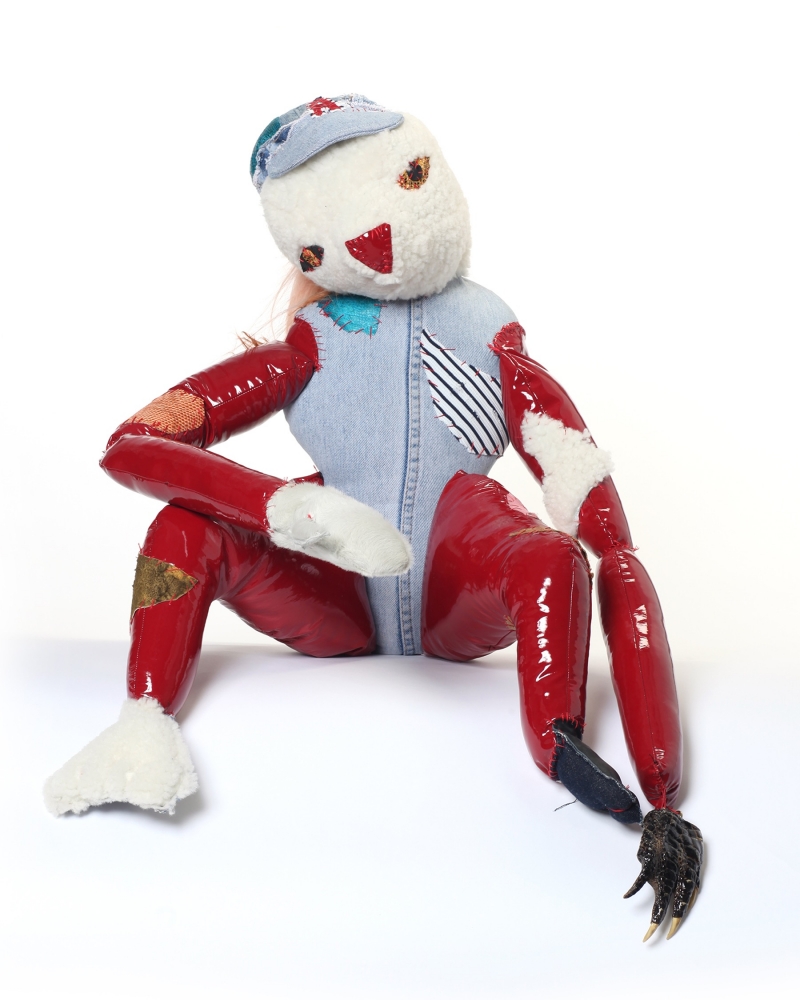
aqnb** And in sports, in professional sports, the gaze is not only the referee or the spectators, but also this whole system of surveillance and maintenance of rules. People watching, in football maybe, whether a hand touched the ball or not, the millimeter slowed down on camera, and the unruly body reduced to this object that either obeys or doesn’t obey. Or, you know — did the foot touch the line or not, was this tackle to the shoulder or the neck, as if there’s a hard line that can be drawn on the boundary of the body in motion. It creates a pathological or obsessive kind of watching.
GW: Oh my god, yes, definitely. And as well, that gaze also being – we were talking about the trans body, but there are other ways of being disembodied, that are liberating but that can also be quite restrictive. Even just the rules of a game are based on your body being a certain way. That gaze is separated from a human form —
aqnb** Based on this extremely particular type of body, or body movement, when exposed to whatever pressure or force. It relies on the athlete’s body being the perfect embodiment of a certain ideal. And athletes who play sport in which you don’t need to be, like, a Greek god figure, are not considered in the public imagination in the same way.
GW: There’s Adonis type bodies, but the body changes according to the sport. With baseball, which is a very Americana, US-centric show — because that’s what I’m talking about too, American myth-making and identity. It’s one of the sports that’s portrayed as an equaliser, basically because you don’t have to have a specific body type or be an ‘athlete’ to play it. While at the same time it’s extremely traditional. It’s often referred to as the traditional “American” sport but has a lot of respectability politics, which usually are policing black players, for example. That’s the history, and a history of segregation, and the fear and anxiety of that. It’s about whiteness, and a kind of American exceptionalism. It’s an imperialistic sport that has been exported to a lot of other countries.
aqnb** I think it’s funny to the rest of the world, with American football, the outfits they wear are just so… effeminate! I mean! In every other football you play it in shorts and a shirt – but here you have the huge shoulders, the caged helmet, whatever else. But what it does is creates this second-skin, superhuman body —
GW: Yeah, so that’s what I was thinking with baseball, you have these corsets, the cock cup. The fetishism of these hypermasculine sports objects.
aqnb** (laughs) The corsets!
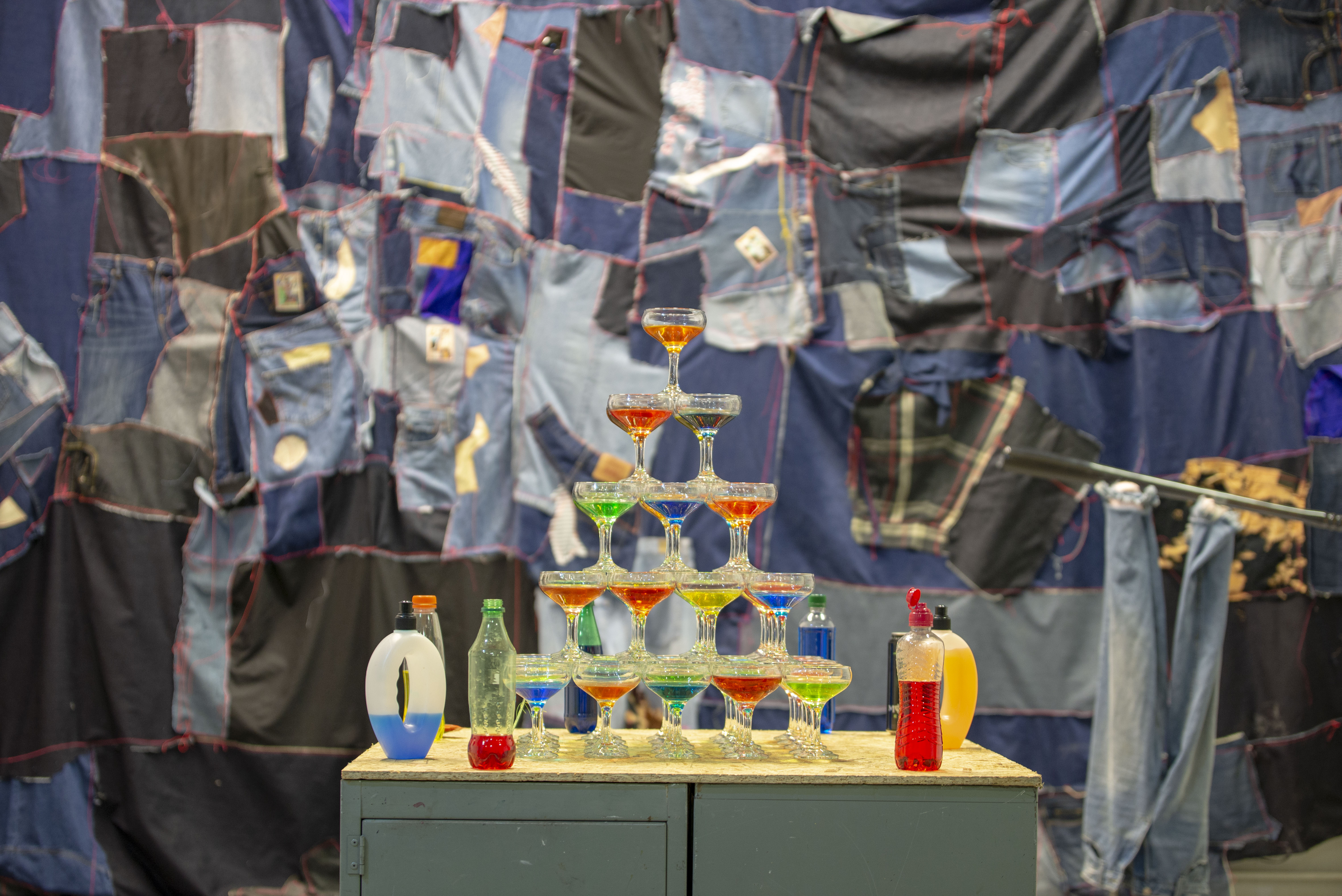
GW: I mean, that’s so chic, I wanna wear it! That was another aspect of specifically doing this show in the UK, where baseball is not played. I had to bring certain objects with me, and I didn’t expect that people here would know all the references, so there’s hopefully a disconnect there with the meanings.
aqnb** I was talking to Gabriella Hirst about this too — she had this film with the sound of cicadas, and I had used a certain type of plant, and when they’re dislodged from their natural surroundings there is a really interesting possibility that the audience won’t ‘get’ a context that for you is totally obvious. (Points at the denim-covered wall) But denim! No confusion there.
GW: Yeah, denim is denim!
aqnb** (I point at a scene that is playing, where one boy is tightening the strings on the other’s baseball corset) God, this is so sexy! Everything in this show is like… did sport people have it first, or did gays have it first?!
GW: I mean, that’s a big reason why I did the show. (laughs)
